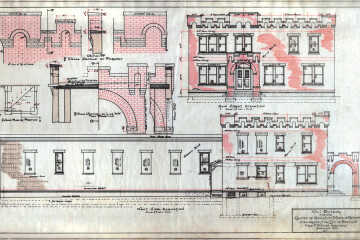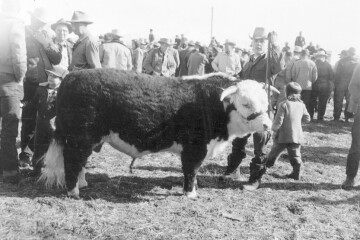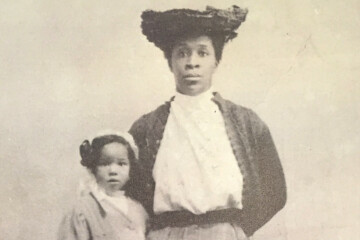Bozeman’s Week of Horror
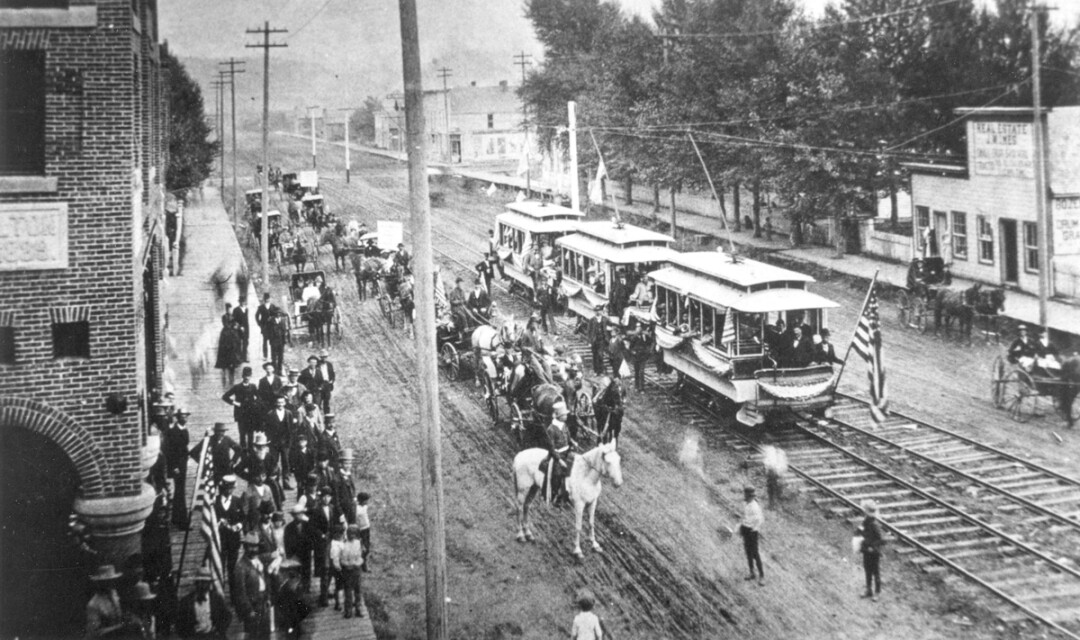
It was a somber winter Sunday in the burgeoning town of Bozeman. The date was February 2, 1873, and a small procession accompanied a tiny coffin along the muddy streets toward the graveyard on the hill.
If not for a crowd gathering outside the butcher’s shop, near the modern-day intersection of East Main and North Broadway, the infant’s funeral might have been the defining event of the day. But had the mourners looked up—and almost certainly they did—they would have gazed upon a macabre display: two dead men, hands tied behind their backs, strung up and dangling from the beams of a meat-dressing rack.
When the week was done, these victims of vigilante justice would be just two of four Bozeman residents to die violent deaths in the course of seven days. In all, five murders—two of the victims women—would form the tale of what the Bozeman Avant Courier deemed a “Week of Horror."
---
Our story begins on the afternoon of October 27, 1872, when a verbal altercation broke out at a Main Street restaurant. The disgruntled parties were one Z.A. Triplett (known to locals as Old Man Tripp) and an employee of the eatery named John Gempler. The two were said to have a long-standing feud.
Triplett was a man of around 63 years who made his living trapping on the frontier. Little is known of Gempler, save that he managed the lunchroom. Their quarrel, though evidently over a matter as trivial as the bill of another patron, ended with Gempler lying gravely wounded with a stab wound to the stomach. He died the following day.
Violence of this sort was not uncommon in the outposts and towns that dotted the Montana Territory. The Bozeman of the early 1870s, however, was a place of transition. Nearly a decade removed from its establishment as a stop along the embattled Bozeman Trail, the town was becoming a destination in its own right, eager to wrest itself from a rough-and-tumble past and emerge into a more civilized future.
Brick buildings like the Metropolitan Hotel were rising up alongside the rickety wood structures of Main Street. Men like William H. Tracy and Lester Willson had traveled east and returned with young brides, who commissioned proper homes to replace the cabins and tents that had served as the town’s primary lodging. And in 1869, only three years prior, Bozeman’s first jail had been built.
It was to this jail, a simple log cabin on East Mendenhall near Bozeman Avenue, that Triplett was brought. He was still there awaiting trial three months later—much to the chagrin of the town’s taxpayers—when our second murder took place.
---
John W. St. Clair, known to most as Steamboat Bill, is described in the Avant Courier as a young man of low character whose days were spent “in the haunts of vice.” He was by most accounts a pimp who worked the brothels of Chinatown, then part of a thriving red-light district that ran the length of the alleyway bounded by Main, Mendenhall, Bozeman, and Rouse.
The details of St. Clair’s crime are vague, and contemporary accounts deny even a name to the woman whose life was taken. What we do know is that on January 30, 1873, St. Clair shot a Chinese woman in the head, killing her instantly. The Avant Courier insinuates that the shooting was an accident, but one modern source indicates that he was believed to have murdered several other Chinese women, all of whom were likely sex workers, in a similar fashion.
Whatever the circumstances, authorities arrested St. Clair and escorted him to the little log jail still occupied by the killer Triplett.
---
It was sometime after 10:00 pm on the evening of Saturday, February 1, 1873, when Sheriff John C. Guy caught wind of unrest. Drawn outside by the sounds of shouting, he witnessed several men ramming a heavy beam against the shackled door of the jail as dozens more cheered them on. The sheriff gathered a posse and strode toward the jail, but the conspirators had anticipated his actions and swiftly detained him. The probate judge, S.W. Langhorne, was similarly thwarted in his attempts to intervene, prompting him to dispatch a messenger to Fort Ellis to request assistance.
The cavalry would not arrive in time. By midnight, the deed had been done. The mob had seized Triplett and St. Clair from their cells and marched them several blocks to the slaughterhouse, near where the Town Pump on East Main now stands. There they were noosed and hanged from the improvised gallows. It was said that Triplett was resigned to his fate but that St. Clair begged for his life, ultimately imploring that he be allowed to die in his boots. His request was granted.
Several days later, the Avant Courier offered a grisly account of the aftermath:
When we saw the corpses at midnight [Triplett’s] features were natural, calm, and strange as it may appear, bore the semblance of a smile, while the other [St. Clair], we think, suffered much agony. The tongue was swollen and reached through the lips, the features distorted, and the left hand firmly grasping the pantaloons, a hold broken with difficulty when preparing the body for the grave.
The corpses were still awaiting interment when the body count in Bozeman rose by one more.
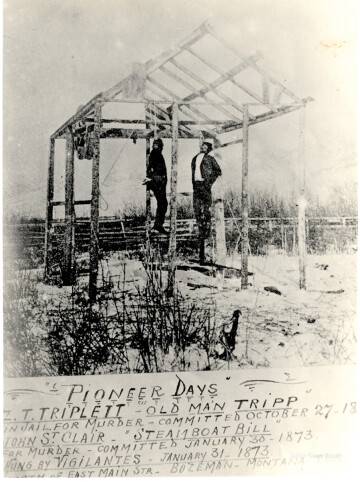

---
The life story of Annie Lincum could fill volumes, if only some record of it had survived. What little we do know of her, regrettably, relates mainly to her violent and untimely death.
Lincum was a Chinese woman who likely came to Bozeman as a sex worker. In this era, countless Chinese women in the West were victims of human trafficking. After being kidnapped or duped into coming to the United States, these women became the property of Chinese organized crime groups called tongs. At auctions, the tongs sold the women like cattle and shipped them out to work off their “debts” in towns and mining camps across the West.
Assuming Lincum was one of these trafficked women, she accomplished a rare and exceptional feat, for she was said to have successfully purchased her own freedom. Whether through this or some other involvements, the Avant Courier relates that she had “many dangerous enemies” in the Chinese community. Her neighbors reported that she had expressed fears for her life in the days before her death, but none had heeded her warnings.
On the night of February 2, 1873—less than 24 hours after the lynchings—Lincum was brutally strangled in her own home. With this final senseless death, Bozeman’s “Week of Horror” had come to a close.
---
There would be no justice for Annie Lincum. Three Chinese men were arrested for her murder and detained at Fort Ellis to prevent any further displays of mob violence. Yet despite compelling evidence for their guilt, including a report of one purchasing rope the night of Lincum’s death, all three were released without charge.
Justice as applied to the two men left swinging that February night would prove far more subjective. No one was ever arrested for the lynchings of Triplett and St. Clair, even though the number of men involved in their deaths was estimated at nearly 100 (for comparison, Bozeman’s population at the time was around 400). Prevailing sentiment along the western frontier held that occasional acts of vigilantism were unavoidable, but in the case of Bozeman’s citizens, opinions may have been divided along socioeconomic lines.
In its February 7, 1873, issue, the Avant Courier was unrestrained in its censure of the lynchings. Residents like the paper’s editor, Joseph Wright, were wary of the damage the public violence might inflict on the town’s reputation. In the coming years, Bozeman would vie not only for a chance at the state capitol but also for a much-coveted stop on the Northern Pacific Railroad. To appear civilized was good for the town’s prospects—and good for those, like Wright, who held a stake in its growth.
But in a letter written to the Helena Weekly Herald and printed on February 20, 1873, one Bozeman resident responds with an impassioned defense to the Avant Courier’s scolding. The writer, signed simply “G.,” argues that the lynchings were an act of desperation undertaken by reluctant citizens who believed the people and institutions entrusted with enforcing law and order had proven inept.
“At present writing,” the indignant citizen claims, “our village presents a degree of security that it has not enjoyed for months past.”
---
In the summer of 1911, several graves in Sunset Hills Cemetery were dug up to make way for a new road. Discovered among the resting spots of the town’s earliest settlers, including the child buried that winter morning in 1873, were the graves of two of Bozeman’s most notorious characters: Old Man Tripp and Steamboat Bill.
They had not been forgotten. A handful of residents who had taken part in the lynchings remained alive and well, living out what remained of their days in a Bozeman that would have been nearly unrecognizable to the men onto whom the town had inflicted its justice. “Today,” reads a June 8, 1911, article from the Montana Standard, “the double execution on the stormy winter night 41 years ago is being told and retold on the streets and in the home.”
Before the two pine coffins were relocated to the potter’s field, it was observed that their bodies were remarkably well-preserved. The long coat Triplett can be seen wearing in his death photo remained intact. St. Clair still wore his boots.
Amy Katherine Talcott is a Livingston-based freelance writer and editor. Crystal Alegria is the Director of The Extreme History Project.
